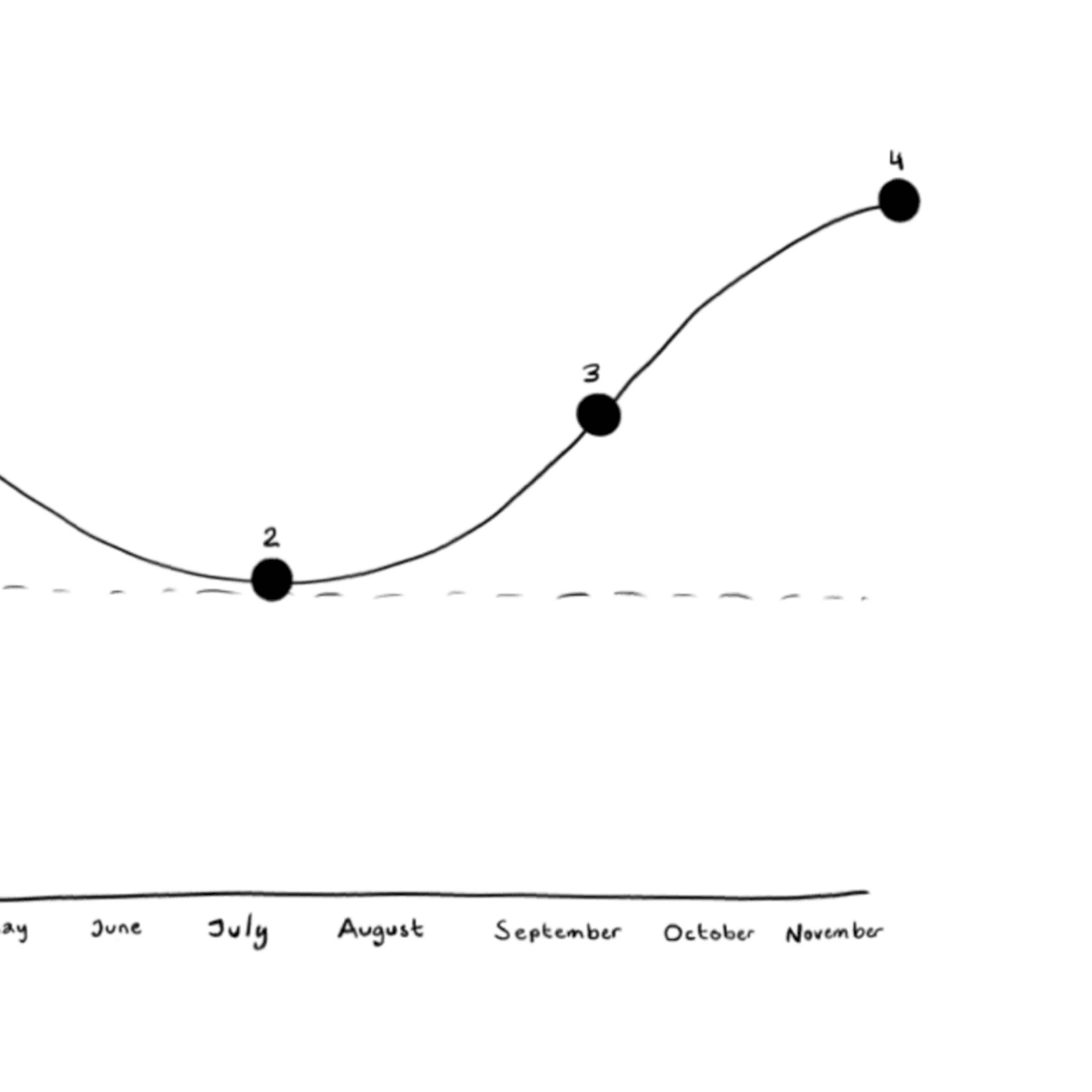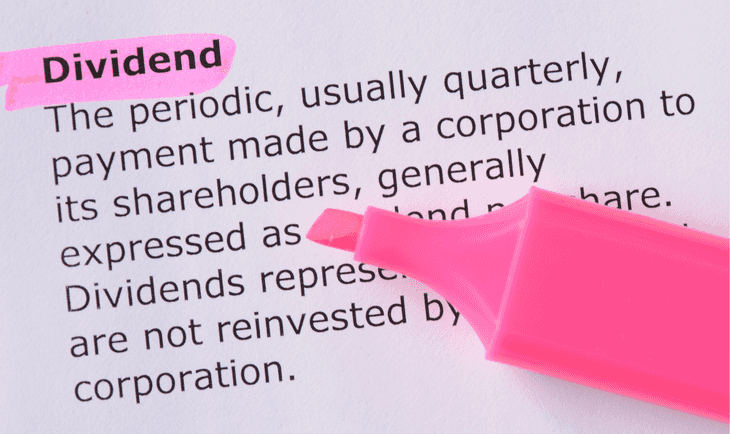
Complete Guide to Dividend Investing Australia

Complete Guide to Dividend Investing Australia
Dividend investing is a great investment strategy depending on your financial goals and getting a dividend payout every month, or quarter, or both is a great way to keep yourself interested in the market if you’re a newcomer.
The typical investment strategy of “buy low, sell high” can take a long time to realise gains, and potentially waiting around for years to make a profit from a wrongly timed purchase puts many new investors off.
Dividend paying stocks typically provide the shareholder with a return even during market volatility, but you have to pick them right and of course there is no guarantee.
It also takes a lot less money and time than you think to start seeing the results of a dividend investing portfolio thanks to compound investing.
This kind of investment strategy isn’t for everyone, a dividend investment portfolio usually doesn’t see capital appreciation, meaning you invest for the dividends, not for the stock growth of the company.
Dividend stocks explained
Dividend stocks are shares in a company that pay their holder for owning them. If you hold dividend stocks, you’ll receive a small percentage between 2% to 8% of the price of the stock, but some are known to pay over 30%.
That small payment is called a dividend and many companies pay dividends from time to time, but dividend stocks are known for providing regular and consistent dividend payments.
Where does the money come from?
Dividends come from the profits of the company, and are a reward to shareholders for supporting the business. In theory, the company uses the capital provided from shareholders to grow their business and make a profit for them and that is distributed in the form of dividends.
Most companies do not give dividends, or will only give them when they have been exceptionally profitable.
Known dividend paying companies or those who want a reputation as providing that for their shareholders on the other hand might still provide a dividend even if they haven’t been profitable.
Dividend aristocrats
Dividend aristocrats are companies which are on the S&P 500 market index that have increased dividends for 25 or more consecutive years.
This long track record is incredibly difficult for a business to achieve especially with the past financial crisis and as investors expect continuing dividend growth it makes them some of the most popular dividend stocks on the market.
Some companies you might have heard of are dividend aristocrats, on the S&P 500 these are:
- McDonald’s
- Walmart
- PepsiCo
- Target
- Coca-Cola
Coca-Cola has raised is dividend price for 59 years in a row!
Unfortunately there are no dividend aristocrats on the Australian Stock Exchange (ASX) with the tough market conditions at the start of 2020 and mid-2022 causing some to cut dividends. The good news, is that some Australian companies are on their way to rank in this exclusive club.
The 4 types of dividends
Most people have heard that a dividend pays in cash, and they are by far the most common, but did you know there's actually three other ways companies are paying dividends?
The first is Stock Dividends, these give the shareholder more stock of the company without changing the price of their shares. They don’t really provide much value, which is why they’re not common anymore.
For example, if a shareholder holds 100 shares at a $1,000 value and the company pays a 10% stock dividend, the shareholder will get 10 more shares, but their 110 shares are still worth $1,000.
The second is a Hybrid Dividend, which is a mix of a cash payout and a stock dividend.
Lastly are Property Dividends, which have monetary value but are not money and are usually sent by a company when they don’t have enough cash to pay a cash dividend. For example, an electronics company might choose to send each shareholder one of their products worth a certain market value.
In this article, we’ll be discussing cash dividends, are they’re the most popular, most common, and arguably the most rewarding.
A warning on high dividend stocks
Many investors get caught in the trap of investing in dividend stocks just because they offer high dividend yields.
Sometimes businesses will offer a higher dividend yield in an effort to attract investors because their current share price has fallen.
Any dividend yields over 7% to 8% should be thoroughly scrutinised before investing, and those stocks offering a higher yield of 20%, 30% or more probably won’t be able to sustain those levels of payout ratios for any real period of time. For context, most dividends fall between 3% to 5%. Again, this is a rule of thumb and there are exceptions.
Investing for income vs investing for growth
Earlier, I said a dividend stock portfolio isn’t for everyone, so who is it for?
It’s for those who want to invest for income not invest for growth.
Typically, investors will put their capital into a company because they believe the stock price will increase and when it does, they’ll make their money from selling it at a (hopefully) big gain.
Dividend investing is different in that it often sacrifices this capital appreciation for a “steady” flow of cash, and if big enough, could provide the investor with a supplementary income or a complete income.
These are very different investing philosophies and whilst it is possible to do both, the average investor likely doesn’t have the money to be able to pull it off in a way which would benefit them.
How much do you need to live off dividends?
It’s an annoying answer to hear, but… it depends!
I would ask in return:
- What’s your monthly/quarterly/yearly expenses?
- How much dividend yield is your portfolio providing you?
- How much do you have to comfortably invest into a dividend portfolio?
- What would you be willing to do to lower your expenses?
Simply, your expenses dictate how much money you need to live off dividends alone, fewer expenses, less money needed.
Let’s say you need $4,000 a month to live, which is $48,000 a year, and you’ve put together a dividend portfolio that roughly pays an 11% dividend yield per month. You would need $440,000 earning 11% to get that $4,000 a month.
Now, consider a few things, 11% is a remarkable dividend yield, $48,000 a year isn’t much to live on in most of Australia, and it’ll take a long time to invest nearly half a million dollars for the average person.
Why not F.I.R.E up your life?
Some have taken these factors into consideration and made a movement called F.I.R.E., or Financial Independence, Retire Early.
FIRE emphasizes a lifestyle change which encompasses aggressive saving or investing (or both) through extreme expenses cutting. Some are known to save or invest up to 75% of their income in a bid to try to retire as early as possible!
Now, obviously this example is only possible for very few people, but if you’re seriously banking on living off dividends, the FIRE movement can give you some inspiration on how you could cut expenses. Spending less on unnecessary things is a no-brainer, but, if you’re able, why not move to a place with a lower cost of living?
Some Australian remote workers have moved to other parts of the country, like Queensland or rural New South Wales, which boast much cheaper housing than the major cities. Others have even built cheap so-called “tiny homes” which don’t require any approval in some council areas, start at around $50,000 and work on renewable energy.
Why not start your “grey nomad” adventures early, working remotely on the road from a caravan or awesome converted bus?
Now, if you’ve found a way to cut your expenses by half on the 11% yielding portfolio above, you’d only need $220,000, which is still a bit, but is much more achievable in a shorter amount of time. Realistically and in most cases, a really well-structured dividend portfolio will be like an extra half-income, meaning you might only need to work part-time, which isn’t a bad thing at all!
How to invest in dividend stocks
Have a plan for the market
Plan out what your dividend investment objectives are before you start. What dividend stocks, or exchange traded funds (ETFs) will you have in your portfolio?
Whats your investment plan? Will you fully reinvest all of the dividends so that your dividend payments compound? How many years will you do that for? Or, Will you take out, say, half of the dividend payment and reinvest the other half, so you have some income right away?
A popular approach is to fully reinvest the dividend payments back into the dividend paying stock, company or fund for a few years and then start to take a small percentage as a reward after then.
Of course, you could always pocket the full dividend from the start, but it’ll only be a few cents and isn’t that really that exciting.
Commit early, invest right away
As soon as you decide you’re going to be a dividend investor, commit right away. You want as much time as possible to compound your dividend investments, and starting as soon as you’re certain is the only way to do that.
Even if you’re younger, like someone in university who works casually and isn’t earning much money, some brokers allow a purchase of fractional shares, so even if all that’s spare is $20 a week, you can invest that and make a start.
You never know, your older self might just thank you for your investment decision.
Frame your wins
You will not be getting a lot of money at the start. It might take a while to build up to even $200 a month in dividends. It’s a slow and steady grind which can feel pointless, after all, you can’t live on $200 a month!
This is where framing your wins is important, instead of, “it’s not enough” that $200 is this month's phone bill, a tank of petrol and maybe even a case of beer completely paid for just because you invested into dividend stocks.
Shifting your mindset in this way will motivate you to keep going and keep you excited for your next dividend payment.
Understanding DRIPs, or DRPs
Normally, a person who owns shares of a dividend paying company will have their dividend payment sent directly to their bank account. Others would rather re-invest those dividend earnings back into the market, if that’s you, then you need a “DRIP”.
DRIPs, also sometimes called DRPs are both acronyms for Dividend Re-Investment Plans.
They are a mechanism where a dividend payment is automatically reinvested into the stock that paid the dividend. These plans can either be offered by the company or dividend instrument itself, or by a stockbrokerage platform.
Companies that pay dividends typically offer perks on shares purchased through DRIPs by either selling them at a small discount, or waiving their commission. Shares can also be purchased fractionally, meaning you can purchase a portion of a share, even if the dividend payment was only a few cents.
Understandably, these plans for reinvested dividends are very popular due to being a way investors can easily compound an investment.
Understand your tax obligations
The downside to earning any money is that you unfortunately have to pay taxes.
The Australian Taxation Office (ATO) has many resources dedicated to explaining how they tax dividends, but in general:
- You need to keep records
- Dividends are considered an income, not a capital gains tax (CGT) event.
DRIPs are not exempt from this, you’ll still have to pay income taxes on dividends paid through them too, the ATO says:
“If you reinvest your dividend, for tax purposes you treat the transaction as though you had received the cash dividend and then used it to buy more shares.”
That means you must declare the dividend as income in your tax return and then those additional shares purchased through the DRIP are subject to capital gains tax (CGT). This is a very general overview and as always, it is best to do your own thorough research and speak to advisory or brokerage services for the best investment advice.
Get a broker
Luckily, there are a huge range of investing financial products available, it’s best to have a look at a comparison service to see what the best brokers are.
It’s best to do a thorough assessment and research on each, understand exactly what they charge, if they support DRIPs, how they pay you dividends, and of most importantly if they have a Australian Financial Services Licence.
It doesn’t hurt to make an account to see what it’s like to use and make a few trades, you can always move your shares to another broker and delete your account if it’s not for you.
Summary:
Dividend investing can be a great way to generate some passive income over time. But as with any investment carries some risk and you should consult with a professional to ensure it's suitable for your financial circumstances.

Active vs Passive Investing: What's the Difference

Why Craig continues to buy regardless of the market

Dollar-Cost Averaging 101
The latest crypto news delivered straight to your inbox.
Subscribe to our newsletter




